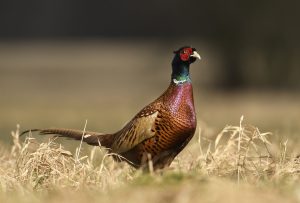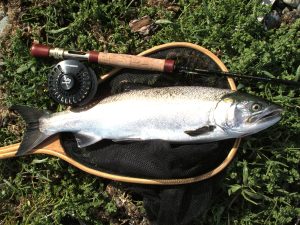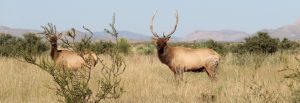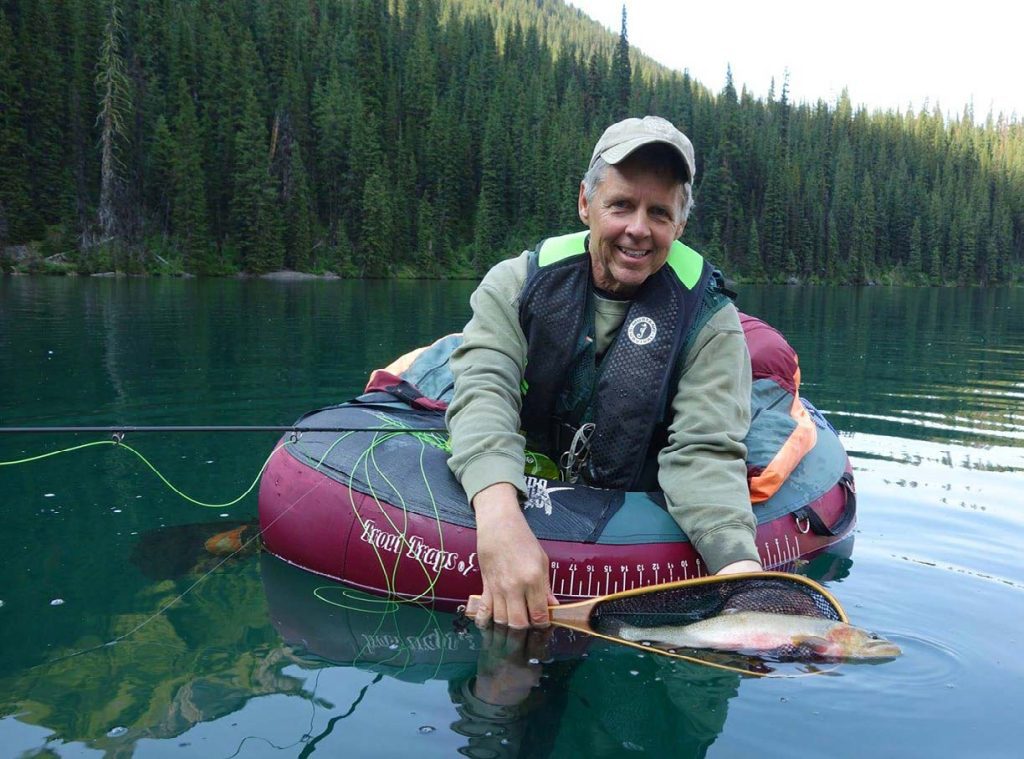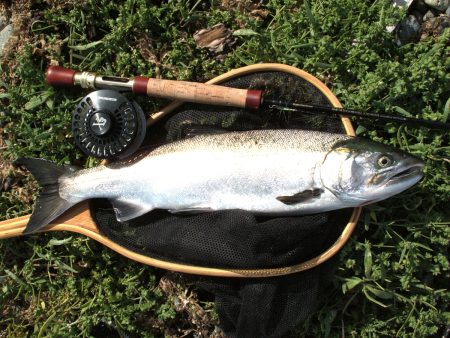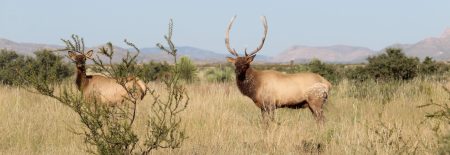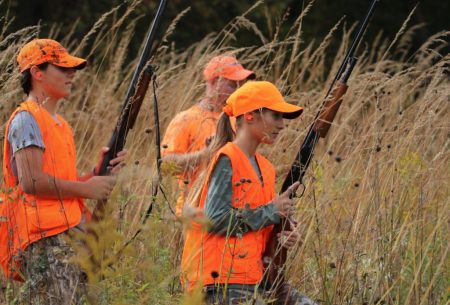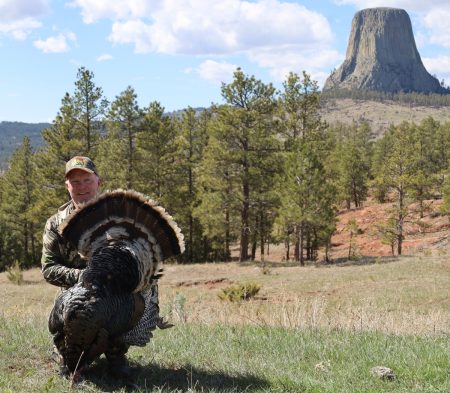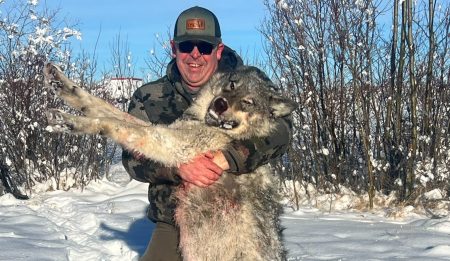When people think about the Canadian province of Alberta, they imagine the snow-capped Rocky Mountains, crystal clear streams and endless powder for downhill skiing. And they aren’t wrong. Alberta’s Rocky Mountains are one of the most beautiful places in North America. These mountains also abound with fish and wildlife. Alberta’s provincial mammal, the bighorn sheep, makes its home in the lush alpine basins protected by these rocky peaks. And if there were ever a fish that epitomized these mountains, it’s the cutthroat trout.
The cutthroat is the only true native trout in the Canadian Rockies. The bull trout is also native, but that fish is a member of the char family. Sadly, cutthroat genetics are rapidly being eroded by the much more precocious rainbow, an interloper in Alberta except for in the Athabasca drainage. Some pure-strain cutthroat trout have been preserved in high-mountain lakes and the highest reaches of mountain streams. In lower stretches, they are typically diluted with rainbow lineage.
Two forms of cutthroat are recognized in Canada. The Pacific form is found along the west coast of British Columbia and is often anadromous, equally at home in both freshwater and saltwater. The second form, the Westslope cutthroat, is the lover of high elevations and is found throughout interior British Columbia and along the east slope of the Rockies in Alberta. Rare is the small mountain stream or high-elevation lake that does not have some Westslope cutties in it. Alberta’s provincial stocks of native cutthroat were reduced to one lake in Kananaskis Country, Picklejar Lake. At one point, subsequent stockings of BC fish have once again expanded the cutthroat’s range in Alberta. Sadly, biologists believe there are few, if any, pure Alberta-stock cutthroat left in the province.
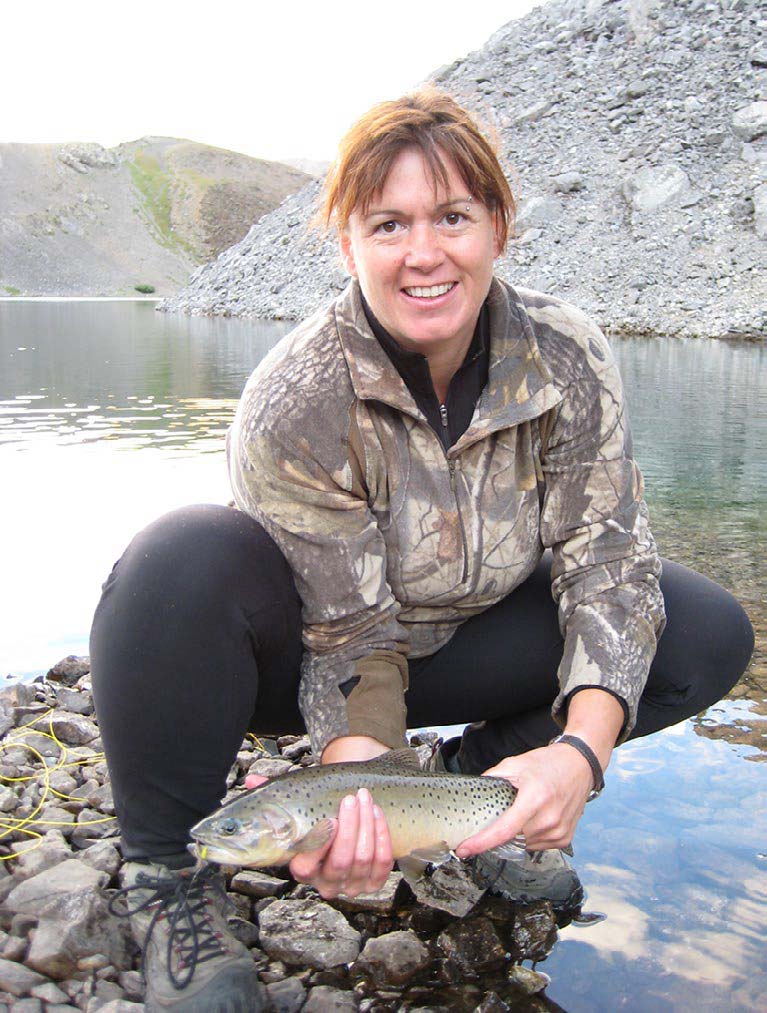
Voracious Feeders
If the cutthroat has one downfall, it’s that it is a voracious feeder. It is typically easily fooled by an angler having an artificial fly or lure, and it becomes a downright idiot in the presence of a worm or commercially manufactured baits. For this reason, the use of bait is not permitted in the bulk of cutthroat waters. (And truthfully, we have rainbows if we want to dunk a worm.)
Cutthroats also deserve more respect. They are the dry-fly angler’s dream-come-true. Rare is the day when you can’t coax them into slurping a large hopper or mayfly off the surface. I don’t mean to come across as a fly-fishing snob. (I’m most definitely not.) In fact, 80% of my fishing is with a spinning or casting rod in hand, but when it comes to cutthroat, I’m a fly-fishing purest. From novice to expert, the cutthroat is sure to please.
One of our guilty pleasures each summer is to take to the high country west of Calgary and explore a number of new lakes. Most are filled with eager cutthroat, and rare is the day when you have to share the lake with more than a handful of other anglers. A few years ago, we decided to head into the mountains on an August long weekend. For anyone who has visited Alberta’s Kananaskis Country on a long weekend, you know that campgrounds are spilling over with weekend warriors and that hiking trails need traffic controllers for the throngs of people using them.
But, as is typical with the mountains, the number of people diminishes in equal proportion to the number of miles traveled from the trailhead. I’d been to this particular lake about 20 years previously. But with so much of the backcountry being developed, I was shocked to find it in relatively the same state. While the trail in was slightly more discernible, it wasn’t in an official guide anywhere. There was virtually no sign that humans had been there that year. It was hard to believe it, considering we’d started on a trailhead only an hour west from a city with a population of over one million people. I doubt we could have flown in anywhere and found this type of solitude, let alone found it after hiking a measly five hours. This is what draws me to fishing for cutthroat.
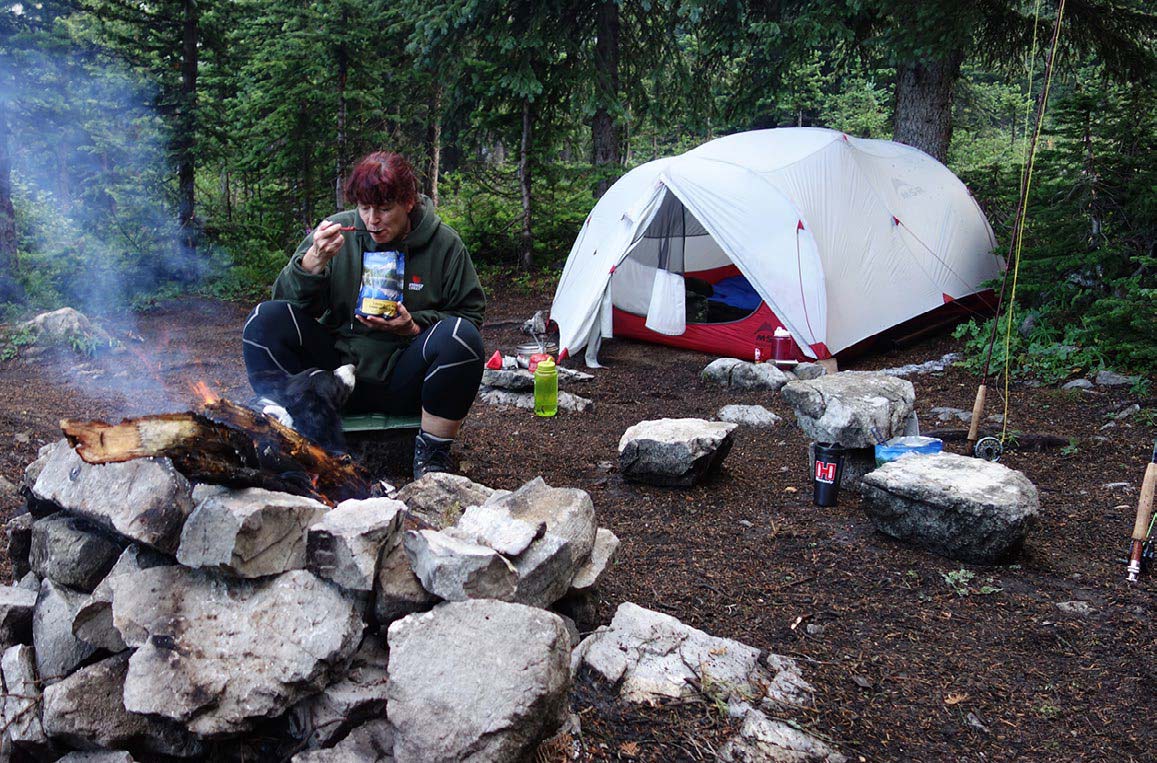
Private Oasis
We fished that lake for two days and saw two hikers one afternoon. Otherwise, it was our private oasis. Each morning we’d peek out the tent door to a lake filled with dimples from rising trout. None of them were big, maybe 12 to 16 inches in length, but the action was non-stop and the backdrop couldn’t have been more spectacular. When we needed a break from casting our flies, there were bighorn sheep and mountain goats in the cliffs above where we could focus our attention. Cutthroat trout is as much about where you fishing as what you are fishing for.
If cutthroat are rising naturally, catching them is pretty simple by just matching the hatch. Truthfully, in these high mountain lakes, you don’t even need to be that close. Summer is short in the high country and insect activity on the surface is rare, so when it happens, cutthroat are eager to feed. I’ve found that with a section of Adams, Black Gnat, Humpy and Letort Hopper in sizes from number 16 to number 2, there isn’t a hatch you can’t match closely enough for a cutthroat that’s actively feeding.
Even when cutthroat are not rising, it’s still often quite easy to get them to the surface. In this case, bigger is often better and I like to use hopper patterns in the number 6 to number 2 size range. Hoppers are a fairly natural feed source in August and September in the mountains. It’s not uncommon to have huge caddis flies, like the giant sedge, present in small numbers as well. Most often these are sources of food by chance, so even when a hatch isn’t happening, cutthroat are still ever-vigilant of the occasional tasty morsel landing on the surface of the lake.
What I’m about to tell you next is proof positive that I’m not a fly-fishing snob. Rather than delicately presenting these big flies, I like to land them fairly hard on the water then drag them back across the surface at a fairly brisk pace. The fly needs to be well-greased to remain buoyant, but this unorthodox method rarely lets me down.
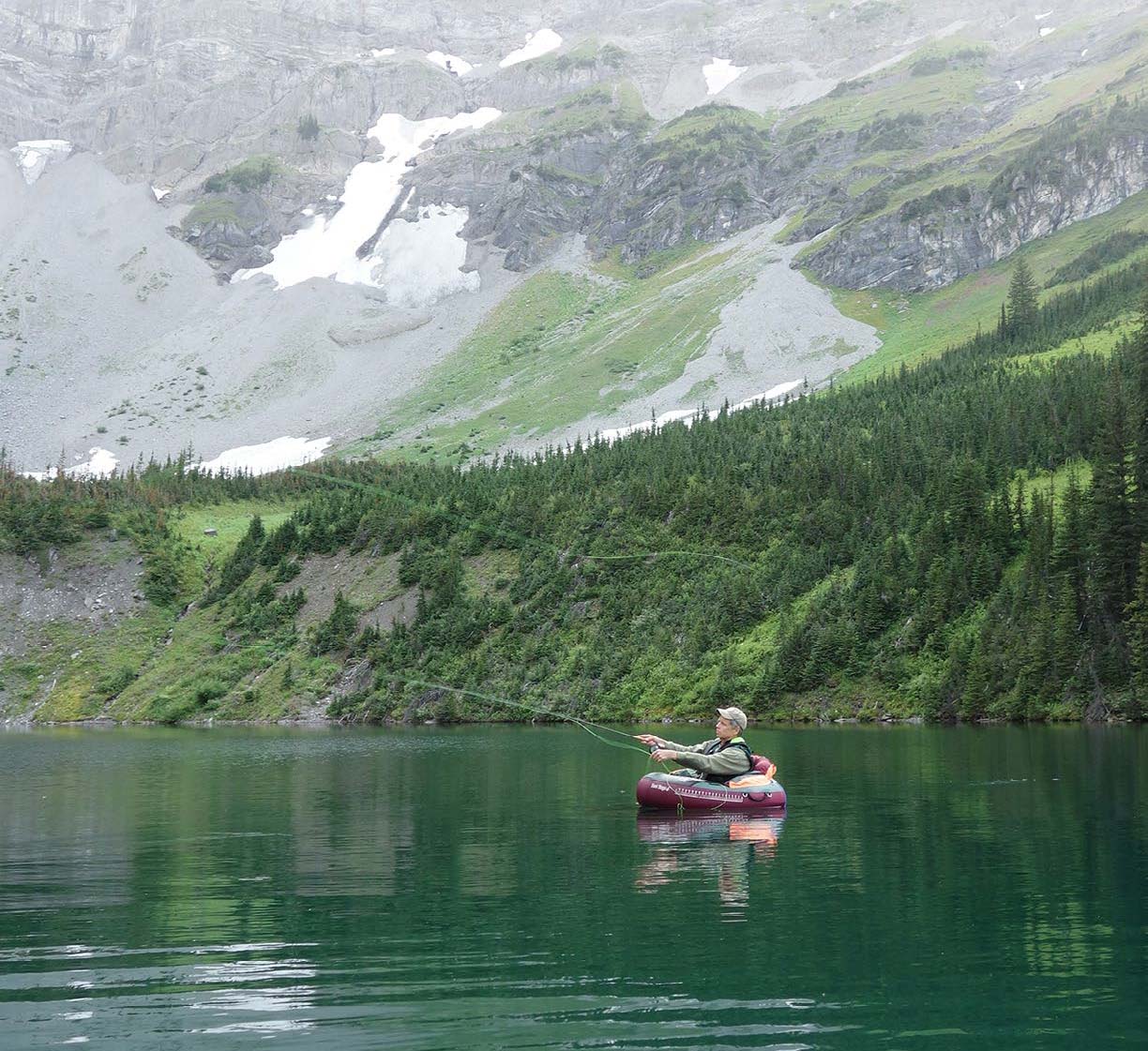
Our Favorite Lake
Vanessa and I have a favorite lake in Kananaskis Country that we often fish. It’s only an hour’s hike in and it sees a lot of pressure from shoreline anglers. We typically take our float tubes up to avoid the crowds and then get out in the middle of the lake where there is no pressure.
While I doubt many self-respecting fly fishermen would admit to doing it, we often troll dry flies by slowing moving along in our tubes and dragging the flies across the surface. Even when no one else is catching fish, this method elicits some savage strikes. On more than one occasion, I’ve had fish snap the leader just from taking the fly so hard. The only time I find this method doesn’t work too well is when there is a slight chop on the water and visibility is compromised. In that situation, I’ll use the same dry flies, but I won’t grease them, so they run just subsurface. Rare is the day when you actually have to pull a wet fly out of the box for a high-mountain cutthroat.
While mountain lakes are my passion, I’ve done my share of fishing for cutthroat in flowing water, from tiny headwater streams to large, fast-flowing rivers. One of my most memorable trips was on Alberta’s Ram River, arguably the best cutthroat river in North America. I helicoptered in to a remote stretch of the river with my buddy Ken Bailey. I was holding my own pretty well while insect activity was abundant on the river, when Ken proceeded to school me in the fine art of catching cutthroat when the surface was calm. We’d gone quite a while without enticing a rising trout. Even on nymphs, things were pretty slow. So, Ken headed down to a stretch that had been productive earlier in the day and told me to watch and learn.
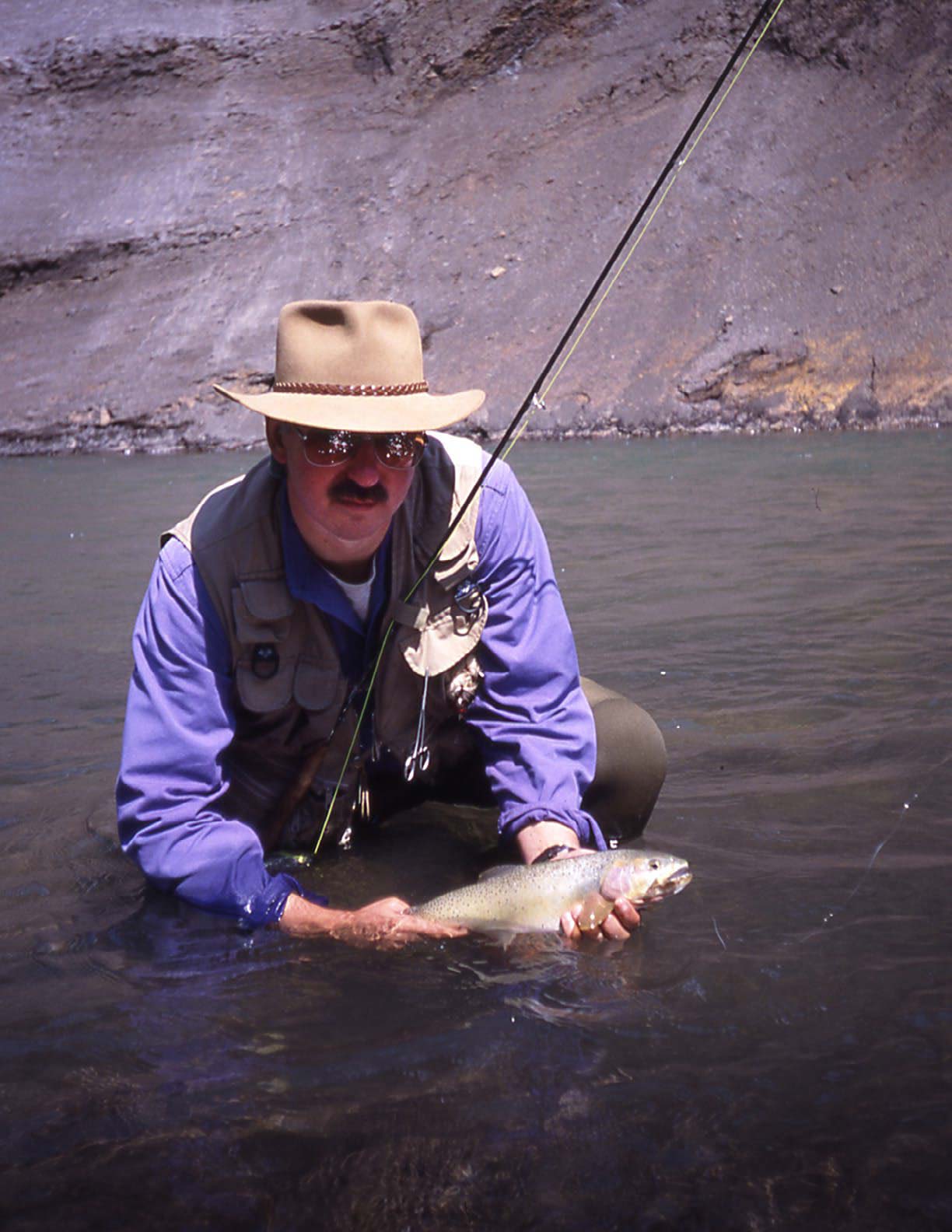
I honestly can’t remember what fly he tied on and it likely doesn’t matter but for about the next 15 minutes, he cast upstream and allowed the fly to drift naturally downstream without a rise. He never changed flies and he never changed his drift. I was kind of chuckling when the first fish rose. Then, on the next dozen or so drifts, Ken picked up a big fat cutthroat nearly every time. He just smiled and said, “Sometimes you just need to convince them something is hatching.”
While I rarely pull out a wet fly on a lake, they definitely have their place on streams and rivers. One of my favorite things to do on a tiny stream is to tie on a dark-colored nymph like a Hare’s Ear. I put it about two or three feet below a strike indicator and work areas below small cascades or other features that cause major disturbance on the surface of the water. Some of the streams we fish are so small that you are not even required to cast. You quite simply dangle the setup below the rod tip in the turbid water. Then you watch for any hesitation in the strike indicator as it moves downstream. I was shown this method by a member of the Canadian Fly-Fishing Team on the Grand River in Ontario while fishing for browns. However, it’s equally productive in the high-mountain streams of Alberta. The fish are typically small in these tiny creeks, but the intimate style of fishing more than makes up for it.
If you’ve ever dreamed of heading to Alberta’s high country in search of cutthroat trout, it’s easy to do on your own and there are numerous lakes and streams that are easy to access. I’d recommend hitting Kananaskis Country to the west of Calgary. Some of the more productive lakes there include Rawson, Burns, Picklejar, Tombstone, Carnarvon, Lillian and Loomis. Cutthroat can also be caught in virtually every headwater creek in the region. If you really want to fish for big cutthroat in flowing water, then head to the Ram River west of Red Deer. For more information, look to these sources:
Adventure Guide to Kananaskis Country
Rockies Heli Canada – Fishing Adventure
It’s definitely not the challenge of catching a cutthroat that draws me to the high country. It’s the idea of where they live and what they represent. They are a true fish of the mountains. You don’t earn a cutthroat with your superior angling skills; you earn a cutthroat with the sweat of getting to where they live.
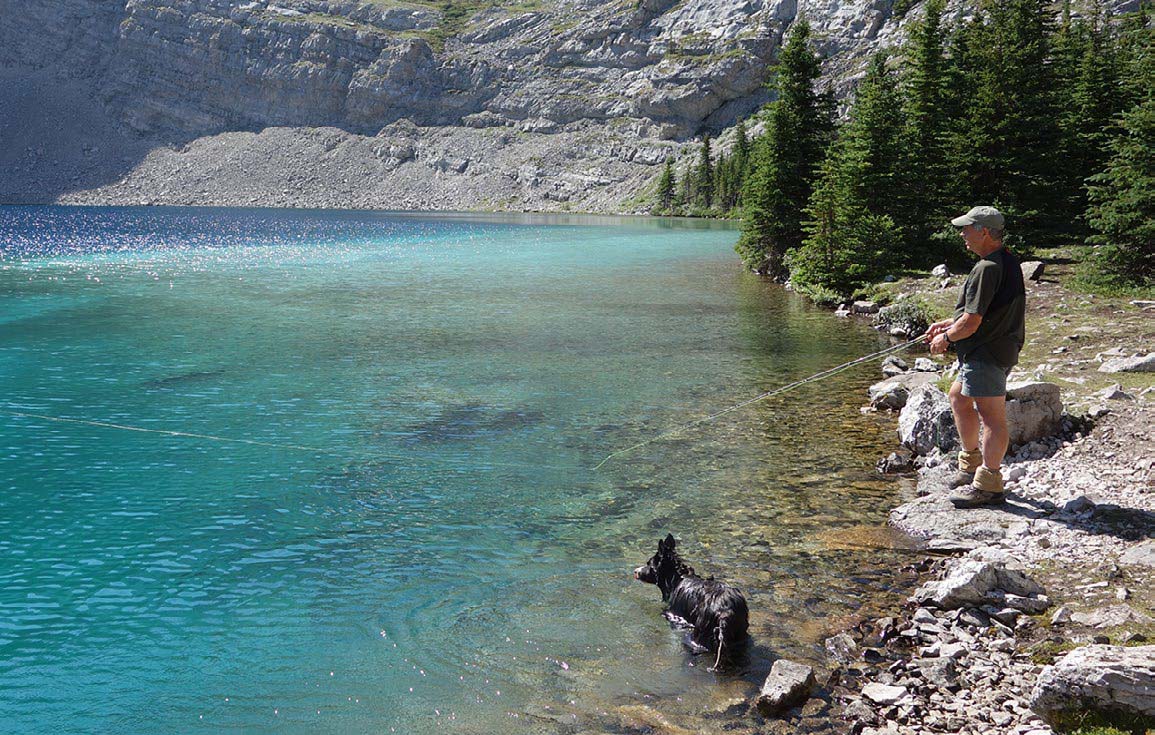
Per our affiliate disclosure, we may earn revenue from the products available on this page.

